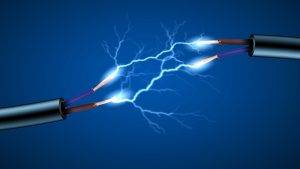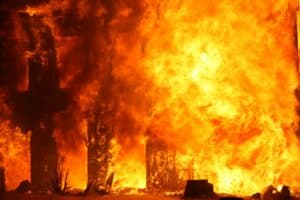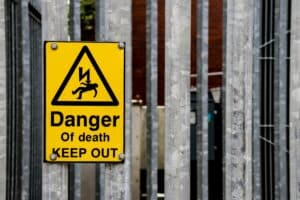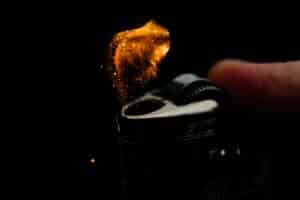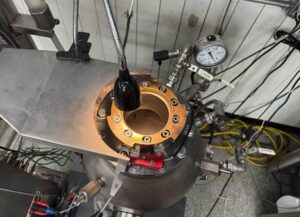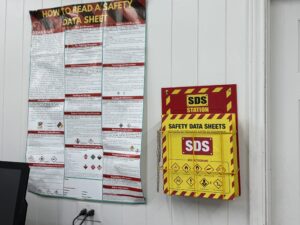We also offer
What Is a Dust Hazard Analysis (DHA)
A Dust Hazard Analysis(DHA) is a formal, systematic evaluation of your facility to identify potential fire, flash fire, or explosion hazards associated with combustible dust. It involves identifying where combustible dust is present, evaluating how and where it could become airborne and ignite, and reviewing existing controls to determine if they’re sufficient.
Rather than relying solely on generalized safety guidelines, a Dust Hazard Analysis tailors the assessment to your specific processes, materials, and equipment. It doesn’t just highlight what could go wrong—it provides practical, prioritized recommendations to reduce or eliminate risks, such as timely DHA updates, consistent housekeeping practices, improved compliance with NFPA and OSHA standards, and better emergency and explosion protection measures.
The Risk of Combustible Dust
Combustible dust is a hidden but serious hazard in many industries—including food, wood, metal, plastic, chemical, and pharmaceutical processing. Fine particles can ignite or explode when suspended in air inside confined spaces like ducts, silos, or equipment. The result can be catastrophic: injuries, fatalities, and extensive facility damage.
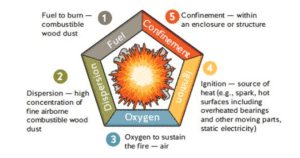
These events happen when five elements come together—fuel (dust), oxygen, dispersion, confinement, and an ignition source—known as the Dust Explosion Pentagon. All five are often present during normal operations. Dust accumulates, static electricity sparks ignition, and confined spaces amplify the effects.
While routine cleaning and general safety protocols are important, they alone aren’t enough. To truly prevent combustible dust explosions, you need a focused, methodical approach. That’s where a Dust Hazard Analysis (DHA) comes in—as it helps you identify where risks exist and what steps to take to control them, making it a critical tool for compliance, prevention, and protection.
Why Dust Hazard Analysis Matters
Performing a Dust Hazard Analysis (DHA) is essential for identifying and mitigating the risks of combustible dust, which can lead to severe fire and explosion hazards. In industries such as food processing, pharmaceuticals, woodworking, coal handling, metal processing, and even emerging fields like 3D printing—where dust-producing processes are common—a DHA plays a key role in ensuring workplace safety.
Moreover, a DHA is not solely about reducing risks; it also helps ensure compliance with crucial safety regulations and standards. For example, OSHA’s Combustible Dust National Emphasis Program (CPL 03-00-008) specifically addresses these hazards, while the National Fire Protection Association (NFPA) provides detailed guidance on how to conduct a DHA. By adhering to these regulations, companies can avoid fines, legal liabilities, and align with industry best practices.
If you’re looking for ways to meet these requirements without overspending, read our article on A Cost-effective Dust Hazard Analysis that Complies with NFPA 652.
In addition, conducting a thorough DHA helps facilities identify dust explosion risks, evaluate existing safety measures, and uncover areas for improvement. As a result, this proactive process supports targeted safety actions that protect workers, equipment, and infrastructure.
By reducing the likelihood of dust-related incidents, a DHA also minimizes operational disruptions and strengthens overall efficiency. It lays the groundwork for a lasting culture of safety and accountability in any facility handling combustible dust.
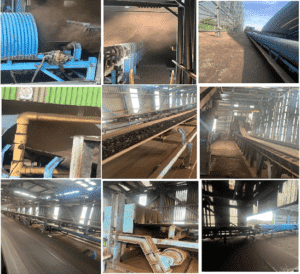
Types of Dust Hazard Analysis We Offer
Every facility is different, and there’s no one-size-fits-all approach to dust hazard evaluation. That’s why we offer several types of Dust Hazard Analyses to match your situation:
-
Preliminary (Design-Stage) DHA: Early-stage evaluation of potential dust hazards before detailed analysis begins.
-
Prescriptive-Based DHA: Follows established codes and standards to manage combustible dust risks.
-
Risk-Based DHA: Prioritizes hazards based on likelihood and severity rather than strict rule adherence.
-
Performance-Based DHA: Focuses on achieving safety outcomes tailored to specific facility conditions.
-
Hybrid DHA: Blends prescriptive and performance-based approaches for flexibility and compliance.
-
DHA Revalidation: Periodic review and update to ensure the DHA reflects current operations and standards.
Each DHA we deliver is backed by a combination of on-site expertise and detailed testing through our ISO/IEC 17025:2017 accredited laboratory. To learn more about specific dust hazard analysis methods, please visit our blog Dust Hazard Analysis(DHA) Methodologies.
What to Expect From Our DHA Services
-
On-site hazard identification and equipment inspection
-
Evaluation of dust-handling processes and potential ignition sources
-
Sample collection and combustible dust testing in our in-house lab
-
Analysis of explosion scenarios and worst-case events
-
Recommendations for ignition control and explosion protection
-
Basis of safety review and risk reduction strategies
-
Customized, practical recommendations tailored to your facility
-
Assistance with implementation and employee training
Why Choose Prime Process Safety Center
When you work with Prime Process Safety Center, you’re getting more than a compliance checklist. You’re partnering with professionals who understand the science, the regulations, and the realities of industrial operations.
We bring:
-
Deep cross-industry experience, from food to pharmaceuticals
-
An in-house lab for faster, more reliable testing
-
A practical, cost-effective approach focused on real-world use
-
Ongoing support as your facility and processes evolve
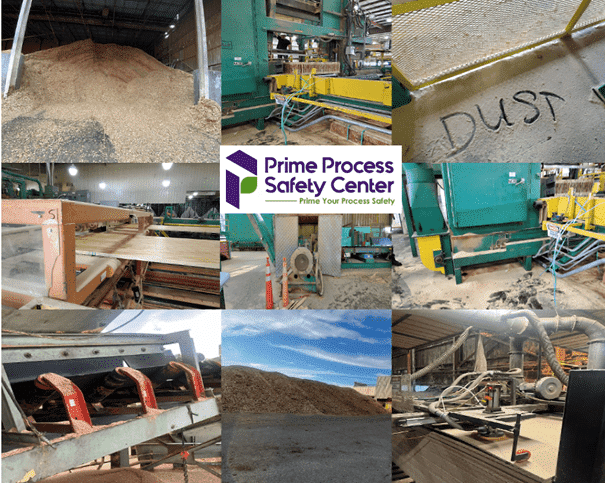
Ready to Get Started?
If you’ve never conducted a dust hazard analysis, or if yours is due for an update, now is the time to act. At Prime Process Safety Center, we make the process clear, practical, and tailored to your needs.
Our team is ready to help you evaluate your dust hazards, improve your safety profile, and stay compliant with confidence. Let’s talk about how we can help you protect your people, your facility, and your future.
FAQ
1. What is Dust Hazard Analysis (DHA)?
DHA is a systematic review to identify and evaluate the potential fire, explosion, and flash fire hazards associated with the presence of combustible dust in an industrial facility.
2. Why is DHA important in process safety?
DHA is critical because combustible dust can pose severe fire and explosion hazards. Conducting a DHA helps in identifying these risks and implementing measures to mitigate them, ensuring workplace safety.
3. What are the key elements of a DHA?
A DHA typically includes identifying combustible dust hazards, evaluating the likelihood of a dust explosion, examining existing safety measures, and recommending additional safety controls.
4. What does the Dust Hazard Analysis involve?
A dust hazard analysis is a systematic review to identify potential hazards, evaluate existing safeguards, and recommend additional safeguards or process improvements to reduce combustible dust explosion or fire hazards. NFPA 652 does not specify a particular format, but common elements of the DHA generally include material characterization, process characterization, evaluation of existing safeguards, mitigation recommendations and verification. A DHA is the best way to protect people and facilities from the dangers of a combustible dust explosion and reduce legal liability.
5. What is the focus of Dust Hazard Analysis and NFPA 652 Regulations?
A Dust Hazard analysis requires that a hazard must be present – this is usually the presence of an explosible atmosphere and an effective source of ignition. The key requirements for complying with NFPA 652 regulations revolve around the completion of a thorough Dust Hazard Analysis. We aim to provide a coherent focus for the control and mitigation strategies for controlling combustible dust fire and explosion risk.
6. How often should a DHA be conducted?
OSHA recommends conducting a DHA every five years or when a change in process or equipment could alter the dust explosion risk.
7. How to conduct a Dust Hazard Analysis?
Conducting a Dust Hazard Analysis involves a systematic approach to identify and mitigate specific combustible dust hazards. For every identified hazard, it is essential to establish safe operating ranges and outline existing hazard management measures. The primary objective of conducting a Dust Hazard Analysis is to meticulously pinpoint all potential hazards within your facility, particularly those that might have been previously unrecognized. This could be achieved by
- Identifying dust fire and explosion hazards;
- Assessing risk of dust fire and explosion by evaluating the ignition likelihood and consequence of dust fire and explosion.
- Recommending effective and practical hazard and risk control measures;
- Providing the supporting services to assist you in implementing changes and safety measures to prevent dust explosions and fires;
- Providing performance-based analyses in case the physical conditions prevent effective implementations of some safety measures/solutions;
- Tackling both dust fire and dust explosion hazards hand-in-hand.
8. What are common sources of combustible dust in facilities?
Common sources include wood dust, metal powders, certain food ingredients, plastics, textiles, and some chemical residues.
9. What industries typically require a DHA?
Industries that handle powders and bulk solids, like food processing, pharmaceuticals, woodworking, metal processing, and chemicals, typically require a DHA due to the potential presence of combustible dust.
10. How can facilities control dust hazards?
Control measures include implementing effective housekeeping practices to minimize dust accumulation, using proper dust collection systems, and designing equipment to minimize dust escape and prevent ignition sources.
11. How does a DHA integrate with overall process safety management?
DHA is an integral part of Process Safety Management (PSM). It aligns with PSM elements like hazard identification, risk management, employee training, and emergency response planning.
12. When is a Dust Hazard Analysis required for my facility?
NFPA 652, “Standard on the Fundamentals of Combustible Dust,” requires that all facilities handling or producing combustible dust complete a Dust Hazard Analysis or DHA. While NFPA standards are not enforceable, the Occupational Health and Safety Administration (OSHA) relies on these standards when conducting enforcement activities under the Combustible Dust National Emphasis Program. In addition, compliance with NFPA 652 may be required under state and local fire codes, which are typically structured around NFPA 1, “Fire Code,” and/or the International Fire Code.
13. Who should perform a DHA?
A DHA should be performed by qualified personnel or consultants with expertise in dust hazard assessment and knowledge of applicable regulations and industry standards.
14. What are the consequences of not conducting a DHA?
Failing to conduct a DHA can result in increased risk of dust explosions, regulatory non-compliance, potential legal liabilities, and increased insurance costs.
For more detailed answers, please visit Most Frequently Asked Questions about Dust Hazard Analysis page, or simply contact us.






